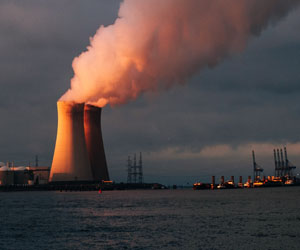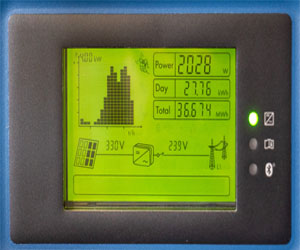


The Looming Crisis

Water is the essence of life, an invaluable resource that sustains ecosystems, nourishes agriculture, and quenches the thirst of billions of people worldwide. However, as the world's population grows, urbanizes, and faces the consequences of climate change, water scarcity is emerging as one of the most critical global challenges of our time. This article delves into the significance of water scarcity, its causes, and potential solutions.
Understanding Water Scarcity
Water scarcity is not simply a lack of water; it is a condition where the demand for water exceeds the available supply or when the quality of water is compromised to the point of being unusable. It is a complex issue with far-reaching consequences:
1. Impact On Human Health: In regions where access to safe drinking water is limited, water scarcity can lead to waterborne diseases, malnutrition, and reduced quality of life.
2. Agricultural Consequences: Agriculture is the largest consumer of water globally. Water scarcity can result in crop failure, food shortages, and reduced income for farmers.
3. Economic And Social Disparities: Vulnerable communities often bear the brunt of water scarcity, as they lack the resources to adapt or mitigate its effects.
Causes Of Water Scarcity
Water scarcity can be attributed to several key factors:
1. Population Growth: As the global population continues to increase, so does the demand for water, for consumption, agriculture, and industry.
2. Climate Change: Altered precipitation patterns, increased temperatures, and changing weather patterns affect the availability of freshwater resources.
3. Poor Water Management: Inefficient water use, lack of investment in water infrastructure, and mismanagement of water resources exacerbate scarcity.
4. Pollution: Water pollution, caused by industrial discharges, agricultural runoff, and untreated sewage, can contaminate freshwater sources, rendering them unusable.
5. Groundwater Depletion: Over-extraction of groundwater, often for agriculture, is depleting aquifers faster than they can recharge.
Solutions To Water Scarcity
Addressing water scarcity is a multifaceted challenge that requires a combination of strategies:
1. Sustainable Water Management: Implementing efficient and equitable water management practices is essential. This includes regulating water use, improving water infrastructure, and investing in water-efficient technologies.
2. Climate Change Mitigation: Reducing greenhouse gas emissions can help slow the pace of climate change, thereby minimizing its impact on water availability.
3. Water Conservation: Encouraging water-saving practices at the household, community, and industrial levels can help reduce demand and promote responsible water use.
4. Wastewater Treatment: Advanced wastewater treatment and recycling systems can turn wastewater into a valuable resource, thus reducing the pressure on freshwater sources.
5. Awareness And Education: Promoting awareness about the importance of water conservation and ensuring that people understand the value of this precious resource is vital.
Water scarcity is a global challenge that affects the environment, agriculture, human health, and social equity. As the world grapples with the complexities of this issue, it is essential to recognize that water is a finite resource and must be managed responsibly. By implementing sustainable practices, prioritizing water conservation, and addressing the root causes of water scarcity, we can work toward a future where access to clean and abundant water is a reality for all, ensuring a more sustainable and equitable world.


Balancing Prosperity And The Planet
 One of the key principles of sustainable development is the recognition that our planet's resources are finite. As we continue to grow in population and economic activity, it becomes imperative to manage our resources more responsibly. This involves reducing resource consumption, minimizing waste, and promoting energy efficiency. Sustainable development encourages innovation and the adoption of cleaner, greener technologies to mitigate our impact on the environment.
One of the key principles of sustainable development is the recognition that our planet's resources are finite. As we continue to grow in population and economic activity, it becomes imperative to manage our resources more responsibly. This involves reducing resource consumption, minimizing waste, and promoting energy efficiency. Sustainable development encourages innovation and the adoption of cleaner, greener technologies to mitigate our impact on the environment.
Environmental sustainability is a central pillar of sustainable development. It advocates for the conservation of ecosystems, the protection of biodiversity, and the reduction of pollution and emissions. It promotes responsible land and resource management, focusing on sustainable agriculture, forestry, and fisheries. Additionally, it calls for the reduction of greenhouse gas emissions to combat climate change, a global challenge that threatens the well-being of people and ecosystems alike.
However, sustainable development is not only about the environment. It also prioritizes social equity and inclusivity. This means ensuring that all members of society have access to basic services like healthcare, education, and clean water. It aims to reduce poverty and inequality, empowering communities and individuals to improve their own quality of life. A key component of this social dimension is the active participation of all stakeholders in decision-making processes, ensuring that no one is left behind.
Economic growth is the third critical aspect of sustainable development. While it seeks to balance prosperity with environmental and social goals, it does not advocate for the halt of economic progress. Instead, it calls for a transition to a more circular and sustainable economy.






A Guide To Harnessing The Sun's Energy
 Sunlight Capture: Solar panels, typically mounted on rooftops, capture sunlight using photovoltaic cells. These cells are made of semiconductor materials, usually silicon.
Sunlight Capture: Solar panels, typically mounted on rooftops, capture sunlight using photovoltaic cells. These cells are made of semiconductor materials, usually silicon.
Electricity Generation: When sunlight hits the cells, it excites electrons in the semiconductor material, causing them to move and generate an electric current. This current is direct current (DC).
Inverter Conversion: Most of our electrical devices and appliances operate on alternating current (AC). To make the electricity compatible, an inverter is used to convert the DC into AC.
Energy Use Or Storage: The converted electricity can either be used immediately in your home or stored in batteries for later use, ensuring a constant supply of power even when the sun isn't shining.
Advantages Of Solar Power For Beginners
Environmental Benefits: Solar power is a clean and renewable energy source. It produces no greenhouse gas emissions, reducing your carbon footprint and contributing to a healthier planet.
Lower Energy Bills: By generating your electricity, you'll rely less on traditional utility providers, leading to significant savings on your energy bills.
Energy Independence: Solar panels provide a degree of energy independence. You're less vulnerable to power outages and price fluctuations from utility companies.
Property Value: Homes with solar panels are often more appealing to buyers, potentially increasing the value of your property.
Government Incentives: Many governments offer financial incentives, tax credits, and rebates to promote solar adoption, making it a more affordable option.
The Future Of Comfort And Efficiency
 Automation And Control
Automation And Control
A central component of smart living spaces is automation and control. Homeowners can remotely manage and monitor their living spaces using smartphones, tablets, or voice-activated virtual assistants like Amazon's Alexa or Google Assistant. This level of control allows for real-time adjustments and customization, enhancing the overall living experience.
Energy Efficiency
Smart living spaces are designed with a strong focus on energy efficiency. They incorporate advanced heating and cooling systems that can be programmed to operate only when needed, reducing energy waste. Smart thermostats learn user preferences and create schedules that optimize comfort while minimizing energy consumption. Lighting systems can adjust brightness based on natural light levels, further reducing energy usage.
Security And Safety
Security is a paramount concern in smart living spaces. These spaces feature advanced security systems equipped with surveillance cameras, motion sensors, and smart locks. Homeowners can monitor their properties in real-time, receive alerts about unusual activity, and control access remotely. This level of security enhances peace of mind.
Entertainment And Convenience
Entertainment and convenience are also central to smart living spaces. Smart televisions, sound systems, and streaming devices can be controlled with voice commands or through a centralized app, creating an immersive and user-friendly experience.
Innovations For A Sustainable Future
 The Importance Of Water-Saving Technologies
The Importance Of Water-Saving Technologies
Water is a finite and precious resource, and the need for water-saving technologies is underscored by several key factors:
Water Scarcity: Many regions worldwide face water scarcity, where the demand for water exceeds the available supply. This challenge is exacerbated by population growth, urbanization, and climate change.
Sustainability: Sustainable water management practices are crucial to ensure the long-term availability of clean water for future generations and to protect ecosystems that rely on water resources.
Efficiency: Efficient water use is not only environmentally responsible but also financially advantageous, as it leads to cost savings for individuals, businesses, and communities.
Water-Saving Technologies And Innovations
Low-Flow Fixtures: Low-flow faucets, showerheads, and toilets use innovative design and technology to reduce water consumption without sacrificing performance. These fixtures limit water flow while maintaining water pressure.
Smart Irrigation Systems: Advanced irrigation technologies use sensors and data analysis to optimize watering schedules and ensure that landscapes receive the right amount of water. This reduces water wastage from over-irrigation.
Exploring Soil-Based Farming
 The Essence Of Soil-Based Farming
The Essence Of Soil-Based Farming
Soil-based farming is the conventional practice of growing crops and raising animals directly in the natural ground, without the use of hydroponics, aquaponics, or other soilless methods. It relies on the fertility and nutrient content of the soil to support plant growth, and it has been the cornerstone of human agriculture since the dawn of civilization.
The Natural Nutrient Cycle
Soil-based farming taps into the natural nutrient cycle of the Earth. Organic matter, decaying plants, and animal waste enrich the soil with essential nutrients such as nitrogen, phosphorus, and potassium. These nutrients are absorbed by plants, providing the foundation for growth. Soil acts as a reservoir, storing water and nutrients, which are gradually released to plants as they need them. This natural cycle fosters a self-sustaining and ecologically friendly agricultural system.
Advantages Of Soil-Based Farming
Nutrient-Rich Soil: Over time, well-managed soil-based systems accumulate organic matter and nutrients, enhancing soil fertility.
Crop Diversity: Soil-based farming supports a wide range of crop varieties, catering to diverse dietary needs and regional preferences.
Sustainability: It promotes ecological balance by maintaining soil health and supporting diverse microbial life in the soil.
Cost-Efficiency: Soil-based farming often requires less initial investment compared to high-tech alternatives like hydroponics.
Resilience: Soil-based systems are more resistant to power outages or equipment failures, ensuring consistent food production.
Challenges And Adaptations
While soil-based farming has been a cornerstone of agriculture, it's not without its challenges. Soil erosion, nutrient depletion, and water pollution are concerns that require attention. In response, sustainable farming practices like crop rotation, cover cropping, and reduced tillage have been adopted to mitigate these issues. Modern soil testing and precision agriculture technologies also help optimize nutrient application.